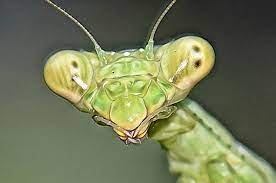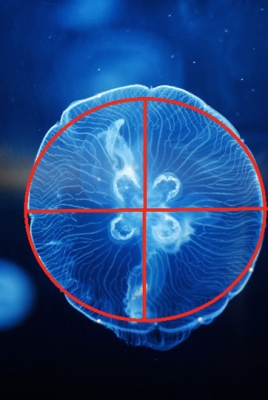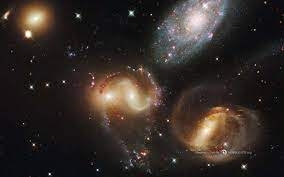What are subtle fluids?
 Jean Baptiste Lamarck believed that all bodies had ‘subtle fluids’. These were weightless fluids pervading all space and bodies. Two good examples of eighteenth – century subtle fluids were electricity and heat. Lamarck believed that subtle fluids were responsible for both movement and change. For example, Lamarck pointed out that snails have poor vision because the feelers on their heads acted as their eyes. According to him, the ancestors of snails did not have feelers. They groped about with their heads to find their way around. This groping sent subtle fluids to the front of the head, and the constant presences of moving subtle fluids eventually brought about the development of feelers, and these feelers were passed from generation to generatio
Jean Baptiste Lamarck believed that all bodies had ‘subtle fluids’. These were weightless fluids pervading all space and bodies. Two good examples of eighteenth – century subtle fluids were electricity and heat. Lamarck believed that subtle fluids were responsible for both movement and change. For example, Lamarck pointed out that snails have poor vision because the feelers on their heads acted as their eyes. According to him, the ancestors of snails did not have feelers. They groped about with their heads to find their way around. This groping sent subtle fluids to the front of the head, and the constant presences of moving subtle fluids eventually brought about the development of feelers, and these feelers were passed from generation to generatio
 Butterfly Evidence
Butterfly Evidence
Lamarck supported his theory of evolution with the example of butterflies. According to him, you find different species of butterflies in different places because butterflies in one place acquire certain characteristics to survive in their environment, and pass on these characteristics to the next generation.
 Lost Worlds
Lost Worlds
The duck billed platypus of Australia is a strange looking bird that was discovered only in 1799. This made several people believe that there might be many other weird animals alive in some remote corner of our planet and that animals that were thought to be extinct might still exist in some unknown place.
.

 Jean Baptiste Lamarck was a French scientist who developed a theory of evolution at the beginning of the 19th century. His theory involved two ideas. The first was the law of use and disuse, which stated that a characteristic which is used more and more by an organism becomes bigger and stronger, and one that is not used, eventually disappears. The second law was the law of inheritance of acquired characteristics. It stated that any feature of an organism that is improved through use, is passed to its offspring. However, Lamarck’s theory cannot account for all the observations made about life on Earth. For instance, his theory would predict that all organisms gradually become complex and simple organisms disappear. But we know that this is not the case, and that simple organisms still exist. So today, Lamarck’s theory is largely ignored.
Jean Baptiste Lamarck was a French scientist who developed a theory of evolution at the beginning of the 19th century. His theory involved two ideas. The first was the law of use and disuse, which stated that a characteristic which is used more and more by an organism becomes bigger and stronger, and one that is not used, eventually disappears. The second law was the law of inheritance of acquired characteristics. It stated that any feature of an organism that is improved through use, is passed to its offspring. However, Lamarck’s theory cannot account for all the observations made about life on Earth. For instance, his theory would predict that all organisms gradually become complex and simple organisms disappear. But we know that this is not the case, and that simple organisms still exist. So today, Lamarck’s theory is largely ignored. The Cambrian Period marks an important point in the history of life on Earth. It is the time when most of the major groups of animals first appear in the fossil record. This event is sometimes called the ‘Cambrian Explosion’, because of the relatively short time over which many life forms appeared. Many reasons have been suggested for this explosion. The first is that the increase in oxygen levels in the atmosphere led to the evolution of more complex body structures. Moreover, many species became extinct at the end of the Vendian Period, and this allowed new life forms to develop. It is also thought that a change in the ocean chemistry made possible the development of hard body parts such as teeth and skeletons. Animals could now swim, burrow, defend themselves, hide, and hunt. However, the sea was still the centre of activity.
The Cambrian Period marks an important point in the history of life on Earth. It is the time when most of the major groups of animals first appear in the fossil record. This event is sometimes called the ‘Cambrian Explosion’, because of the relatively short time over which many life forms appeared. Many reasons have been suggested for this explosion. The first is that the increase in oxygen levels in the atmosphere led to the evolution of more complex body structures. Moreover, many species became extinct at the end of the Vendian Period, and this allowed new life forms to develop. It is also thought that a change in the ocean chemistry made possible the development of hard body parts such as teeth and skeletons. Animals could now swim, burrow, defend themselves, hide, and hunt. However, the sea was still the centre of activity. Our solar system consists of the sun, planets, moons, dwarf planets, asteroids, comets, meteors, and others. Of all the planets in our solar system, the six nearest the Sun can be seen with the naked eye. So these planets – Mercury, Venus, Earth, Mars, Jupiter, and Saturn- have been observed since ancient times. The first planet to be discovered using a telescope was Uranus, in 1781. Neptune, the eighth planet was discovered only in 1846. Pluto was discovered in 1930, but it is now not classified as a planet, and so Neptune is considered to be the last planet to be discovered in our solar system
Our solar system consists of the sun, planets, moons, dwarf planets, asteroids, comets, meteors, and others. Of all the planets in our solar system, the six nearest the Sun can be seen with the naked eye. So these planets – Mercury, Venus, Earth, Mars, Jupiter, and Saturn- have been observed since ancient times. The first planet to be discovered using a telescope was Uranus, in 1781. Neptune, the eighth planet was discovered only in 1846. Pluto was discovered in 1930, but it is now not classified as a planet, and so Neptune is considered to be the last planet to be discovered in our solar system seen by astronomers at California’s Palomar Observatory, and has been given the name ‘Sedna’. Sedna, or 2003 VB 12, as it was originally designated, is the most distant object yet found orbiting our Sun. however, there is some debate as to whether it is a true planet, or a planetoid like Pluto.
seen by astronomers at California’s Palomar Observatory, and has been given the name ‘Sedna’. Sedna, or 2003 VB 12, as it was originally designated, is the most distant object yet found orbiting our Sun. however, there is some debate as to whether it is a true planet, or a planetoid like Pluto. The Cambrian Period lasted for nearly 53 million years, from about 543 million years ago, until 490 million years ago. The continents were still forming, but were mostly barren rocks. The land had no plant or animal life on it yet. During the Cambrian Period, there was an explosion of life forms. Most of these were in the water. Many animals with no backbones lived in the shallow seas. The most plentiful species during this period were trilobites. The species got its name from the three lobes in the hard skin. The trilobite was also one of the first animals to have eyesight. There were plenty of other species living during the Cambrian Period also. Molluscs, worms, sponges and echinoderms filled the Cambrian seas. The plants of the Cambrian were mostly simple, one-celled algae.The Cambrian period ended in a mass extinction. Advancing glaciers would have lowered the temperature of the shallow seas where so many species lived. Changes in the temperature and the amount of oxygen in the water would have meant the end for any species that could not adapt.
The Cambrian Period lasted for nearly 53 million years, from about 543 million years ago, until 490 million years ago. The continents were still forming, but were mostly barren rocks. The land had no plant or animal life on it yet. During the Cambrian Period, there was an explosion of life forms. Most of these were in the water. Many animals with no backbones lived in the shallow seas. The most plentiful species during this period were trilobites. The species got its name from the three lobes in the hard skin. The trilobite was also one of the first animals to have eyesight. There were plenty of other species living during the Cambrian Period also. Molluscs, worms, sponges and echinoderms filled the Cambrian seas. The plants of the Cambrian were mostly simple, one-celled algae.The Cambrian period ended in a mass extinction. Advancing glaciers would have lowered the temperature of the shallow seas where so many species lived. Changes in the temperature and the amount of oxygen in the water would have meant the end for any species that could not adapt. Metazoans were the first multi -cellular animals. They could move, respond to their environment, and feed on other organisms. They developed organs, a nervous system, sensory organs, and a brain which led to the development of intelligence. The earliest forms were flat bodied, like today's flat-worms. Direct fossils of metazoans from later periods have been found. These are fossils of animals that lived in the sea and the seabed, 680 to 570 million years ago. These fossils bear some resemblance to the bodies of some of today's invertebrates, including some types of jellyfish. These fossils are amongst the earliest discovered of distinct forms of animal life.
Metazoans were the first multi -cellular animals. They could move, respond to their environment, and feed on other organisms. They developed organs, a nervous system, sensory organs, and a brain which led to the development of intelligence. The earliest forms were flat bodied, like today's flat-worms. Direct fossils of metazoans from later periods have been found. These are fossils of animals that lived in the sea and the seabed, 680 to 570 million years ago. These fossils bear some resemblance to the bodies of some of today's invertebrates, including some types of jellyfish. These fossils are amongst the earliest discovered of distinct forms of animal life. In the beginning, the Earth's atmosphere was made up of only nitrogen, carbon dioxide, and some hydrogen. There was very little oxygen present, and it was produced by stromatolites- which are rocks formed by the growth of blue green algae- strewn in the sea. Whatever oxygen was present was quickly absorbed by rocks and minerals. Gradually however, excess oxygen began to accumulate in the atmosphere. This excess oxygen had a dramatic effect on the living cells present. It triggered the evolution of a higher form of life. These were nucleus-containing eukaryotic cells. Thus, the simple blue green algae that were the first form of life became stepping stones to higher life forms, thanks to rising oxygen levels in the atmosphere.
In the beginning, the Earth's atmosphere was made up of only nitrogen, carbon dioxide, and some hydrogen. There was very little oxygen present, and it was produced by stromatolites- which are rocks formed by the growth of blue green algae- strewn in the sea. Whatever oxygen was present was quickly absorbed by rocks and minerals. Gradually however, excess oxygen began to accumulate in the atmosphere. This excess oxygen had a dramatic effect on the living cells present. It triggered the evolution of a higher form of life. These were nucleus-containing eukaryotic cells. Thus, the simple blue green algae that were the first form of life became stepping stones to higher life forms, thanks to rising oxygen levels in the atmosphere. About every 75 years, a very special member of the solar system comes close to the Sun. it is Halley’s Comet, which is the brightest and most noticeable of all the comets that appear regularly. Do you know what a comet is? Comets are objects in space that are made up of gas, ice, dust, and small particles of rock. They travel around the Sun in an orbit. They are warmed up as they approach the Sun. this causes the comet to form a head and tail. The head is the cloud-like mass we see in the front. The tail is the trailing part which is made up of small particles and ice.
About every 75 years, a very special member of the solar system comes close to the Sun. it is Halley’s Comet, which is the brightest and most noticeable of all the comets that appear regularly. Do you know what a comet is? Comets are objects in space that are made up of gas, ice, dust, and small particles of rock. They travel around the Sun in an orbit. They are warmed up as they approach the Sun. this causes the comet to form a head and tail. The head is the cloud-like mass we see in the front. The tail is the trailing part which is made up of small particles and ice. opportunity to observe what happens when such a collision occurs. The largest fragments were 2 kms in diameter, and struck Jupiter at a speed of around 60 km/s. the impact scars were clearly visible for months after the impact.
opportunity to observe what happens when such a collision occurs. The largest fragments were 2 kms in diameter, and struck Jupiter at a speed of around 60 km/s. the impact scars were clearly visible for months after the impact.
 The Precambrian Period spans a long period of the Earth's history. It starts with the planet's creation about 4.5 billion years ago, and ends with the emergence of complex, multicelled life-forms almost four billion years later. It is extremely significant, because it is the earliest of the geologic ages which are marked by different layers of sedimentary rock. Laid down over millions of years, these rock layers contain a permanent record of the Earth's past, including the fossilized remains of plants and animals buried when the sediments were formed.The Precambrian is divided into two parts- the Archaean time, and the Proterozoic Era. There may not have been many different forms of life, but very important changes were taking place during the Precambrian. The Earth was formed, and its outer covering cooled and hardened into a crust. The hot molten insides of the Earth leaked out at weak places in the crust to form volcanoes. The clouds formed by the volcanoes caused huge amounts of rain to fall, and the oceans were created.The first life formed. The oceans were like a thick soup, and their chemistry made them the perfect place for life to begin. The first one-celled organisms formed during the Precambrian Era. They had an important job to do. They helped make the air and water around the Earth full of oxygen. Once there was plenty of oxygen, new life could form. This life would have many cells which would evolve into different kinds of animals. All of the important work of the Precambrian period made the Earth ready for what would come next.
The Precambrian Period spans a long period of the Earth's history. It starts with the planet's creation about 4.5 billion years ago, and ends with the emergence of complex, multicelled life-forms almost four billion years later. It is extremely significant, because it is the earliest of the geologic ages which are marked by different layers of sedimentary rock. Laid down over millions of years, these rock layers contain a permanent record of the Earth's past, including the fossilized remains of plants and animals buried when the sediments were formed.The Precambrian is divided into two parts- the Archaean time, and the Proterozoic Era. There may not have been many different forms of life, but very important changes were taking place during the Precambrian. The Earth was formed, and its outer covering cooled and hardened into a crust. The hot molten insides of the Earth leaked out at weak places in the crust to form volcanoes. The clouds formed by the volcanoes caused huge amounts of rain to fall, and the oceans were created.The first life formed. The oceans were like a thick soup, and their chemistry made them the perfect place for life to begin. The first one-celled organisms formed during the Precambrian Era. They had an important job to do. They helped make the air and water around the Earth full of oxygen. Once there was plenty of oxygen, new life could form. This life would have many cells which would evolve into different kinds of animals. All of the important work of the Precambrian period made the Earth ready for what would come next. Hallucigenia was a bizarre looking fossil which appeared to have tentacles on its back. For a long time, scientists were baffled by it, and unable to determine what kind of creature it was. Finally, they realized that they were looking at it upside down! The tentacles were in fact, legs that resembled the tubular legs of today’s velvet worms!
Hallucigenia was a bizarre looking fossil which appeared to have tentacles on its back. For a long time, scientists were baffled by it, and unable to determine what kind of creature it was. Finally, they realized that they were looking at it upside down! The tentacles were in fact, legs that resembled the tubular legs of today’s velvet worms!
 Morse code was a system of communication in which letters and numbers were represented by dots and dashes that could be transmitted by telegraph in the form of sound, and also as flashes of light. The code was invented by Samuel Morse. The Morse code was used extensively by ships at sea. It was used in emergencies throughout the world. However, as technology advanced, the Morse code became obsolete.
Morse code was a system of communication in which letters and numbers were represented by dots and dashes that could be transmitted by telegraph in the form of sound, and also as flashes of light. The code was invented by Samuel Morse. The Morse code was used extensively by ships at sea. It was used in emergencies throughout the world. However, as technology advanced, the Morse code became obsolete. The Vendian Period began about 650 billion years ago, and ended about 543 million years ago with the beginning of the Cambrian Period. The Vendian is when the earliest known animals evolved. These included soft-bodied multi cellular animals, like sponges and worms. During the Vendian, the continents had merged into a single supercontinent called Rodinia. In the 20th century, macroscopic fossils of soft-bodied animals, algae, and fossil bacteria have been found in rocks attributed to the Vendian Period in a few localities around the world. The Vendian is also known as the Ediacaran or as the Proterozoic.
The Vendian Period began about 650 billion years ago, and ended about 543 million years ago with the beginning of the Cambrian Period. The Vendian is when the earliest known animals evolved. These included soft-bodied multi cellular animals, like sponges and worms. During the Vendian, the continents had merged into a single supercontinent called Rodinia. In the 20th century, macroscopic fossils of soft-bodied animals, algae, and fossil bacteria have been found in rocks attributed to the Vendian Period in a few localities around the world. The Vendian is also known as the Ediacaran or as the Proterozoic. Did you know that chalk is almost entirely made up of tiny shells? These shells once belonged to microscopic animals that floated on the ocean’s surface. They can form layers that over the ages become towering chalk cliffs!
Did you know that chalk is almost entirely made up of tiny shells? These shells once belonged to microscopic animals that floated on the ocean’s surface. They can form layers that over the ages become towering chalk cliffs! Vietnam is a small country in Southeast Asia. In 1954, it was divided into communist-ruled North Vietnam, and non communist South Vietnam. North Vietnam wanted to end US support of South Vietnam, and to unite the north and south into a single nation. Over the next ten years, tensions in the area increased as the conflict between North and South Vietnam grew. When North Vietnam attacked a US destroyer on August 2nd 1964, USA officially entered the Vietnam War.
Vietnam is a small country in Southeast Asia. In 1954, it was divided into communist-ruled North Vietnam, and non communist South Vietnam. North Vietnam wanted to end US support of South Vietnam, and to unite the north and south into a single nation. Over the next ten years, tensions in the area increased as the conflict between North and South Vietnam grew. When North Vietnam attacked a US destroyer on August 2nd 1964, USA officially entered the Vietnam War.